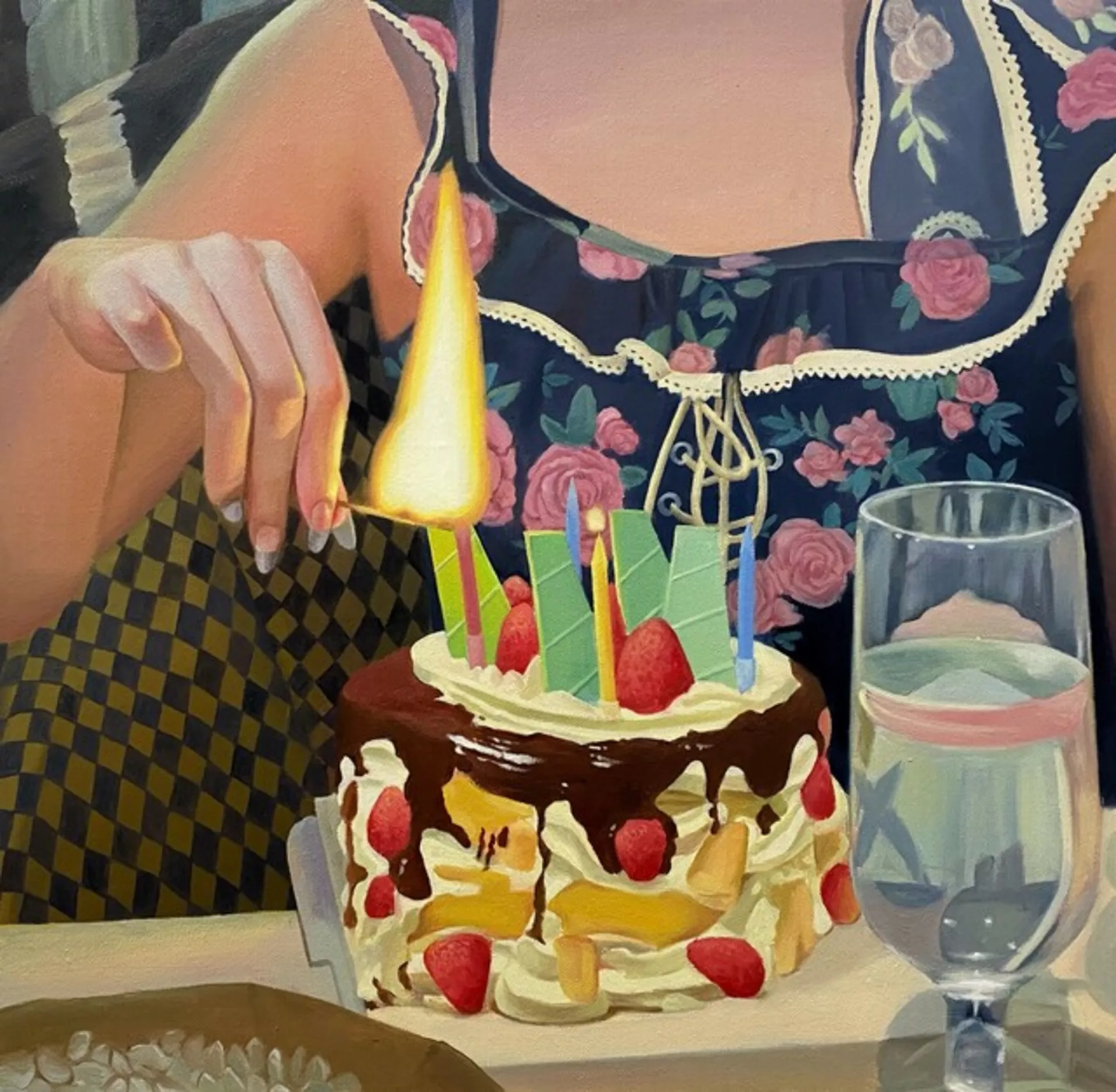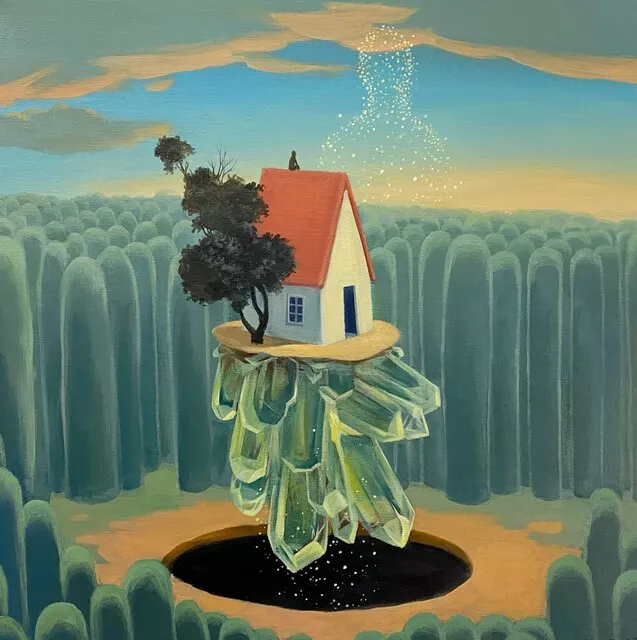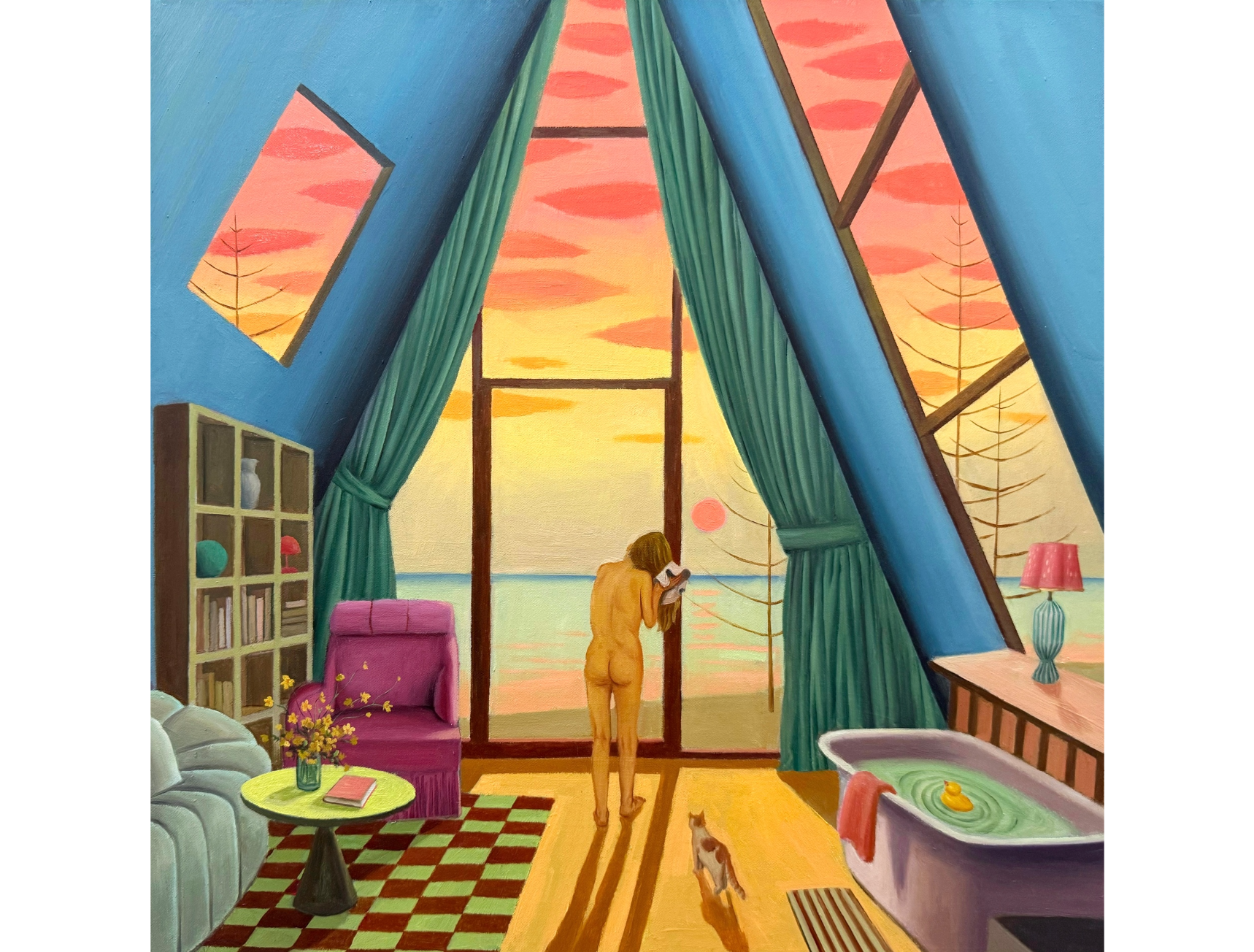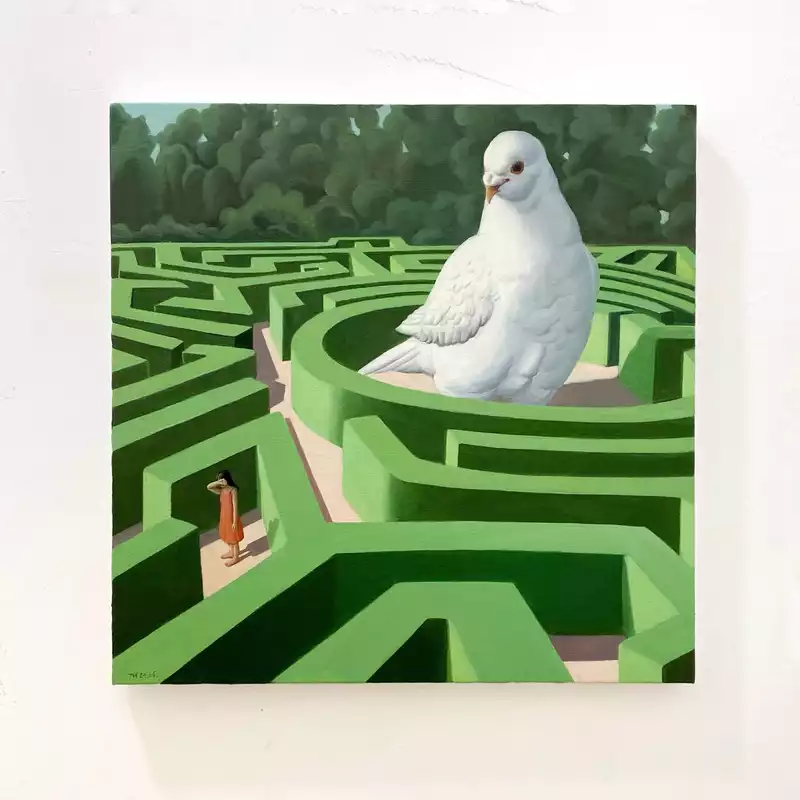In a remote Chinese village, a young painter born in 1994 turns inward—where silence, solitude, and subtle absurdity become his language.
Between Observation and Introspection
There’s a peculiar stillness in Tianhao’s paintings—an atmosphere that refuses to hurry. Born in 1994 in Huanggang, Hubei, and trained at the Xinjiang Arts Institute, Tianhao (田浩) now resides and works in a remote village surrounded by fields, trees, and the open sky.
Drawn initially to botany, he carries that early curiosity into painting: the way light lands on a leaf, the texture of a shadow, the rhythm of growth. It shows. His brushwork is delicate but never decorative. You sense he’s looking for something beneath appearance—some truth that can’t be photographed.
“His imagery invites a lingering gaze — revealing layered meanings that unfold over time.” — Artsy
A Practice of Quiet Resistance
Tianhao’s work isn’t grand or confrontational. It doesn’t scream for attention in the way much of the global contemporary art world does. Instead, it whispers — insisting that viewers slow down and spend time. In an era of spectacle, this refusal to perform is a form of rebellion in itself.
The artist’s gallery describes his paintings as “resisting spectacle in favour of emotional depth and nuanced form.” They hover between the real and the imagined, between the seen and the felt.
His influences are as quietly intellectual as his paintings suggest. Philosopher Blaise Pascal and surrealist René Magritte both hover in the background — each concerned with truth and illusion, each a master of gentle absurdity. Tianhao absorbs their questions but translates them through his own lens of Chinese landscape sensibility and botanical attention.
A Painter of Still Moments
Whether you encounter Be Careful What You Wish For (2025) or Empire of Light (2025), you enter a dreamlike state where figures and shadows melt into hazy color. The titles hint at narrative, but the narrative never fully reveals itself. There’s tension — a kind of existential pause.
His palette leans toward muted pastels and fogged tones, but the emotional range is wide. He can move from melancholy to wonder within a single brushstroke. That’s part of his signature: the emotional shift that doesn’t announce itself but seeps in slowly.
Nature, Solitude, and the Space Between
There’s a biographical truth running through his work. Living outside the cities that fuel China’s art market, Tianhao embodies a different pace of making and seeing. Nature isn’t a backdrop — it’s the subject and sometimes the medium. In his paintings, trees don’t just frame a scene; they seem to think. Clouds don’t drift; they hesitate.
This commitment to silence and solitude connects him to a younger generation of Chinese artists who are choosing inward exploration over social commentary. That doesn’t mean his work is apolitical. In its own way, it’s a revolt against the velocity of modern life and the pressure to produce meaning on demand.
The Road Ahead
At just 31, Tianhao is still emerging. There are no auction records for his work yet — a rarity in a market that moves fast and forgets faster. But maybe that’s the point. He’s not interested in the noise. He’s interested in the pause.
For collectors and curators seeking artists with a long runway — those building their practice before establishing a profile — Tianhao is one to watch. And for viewers, his work offers something we rarely get in 2025: time—the luxury to look long enough for something to unfold.
More About the Artist
-
Born: 1994, Huanggang, Hubei, China
-
Education: Xinjiang Arts Institute
-
Lives and works: Rural China
-
Represented by: KB Fine Art Gallery
-
Profile: Artsy – Tianhao 田浩
In His Own Light
Tianhao’s paintings remind us that quiet doesn’t mean empty — it means attentive. There’s something radical in that these days.





